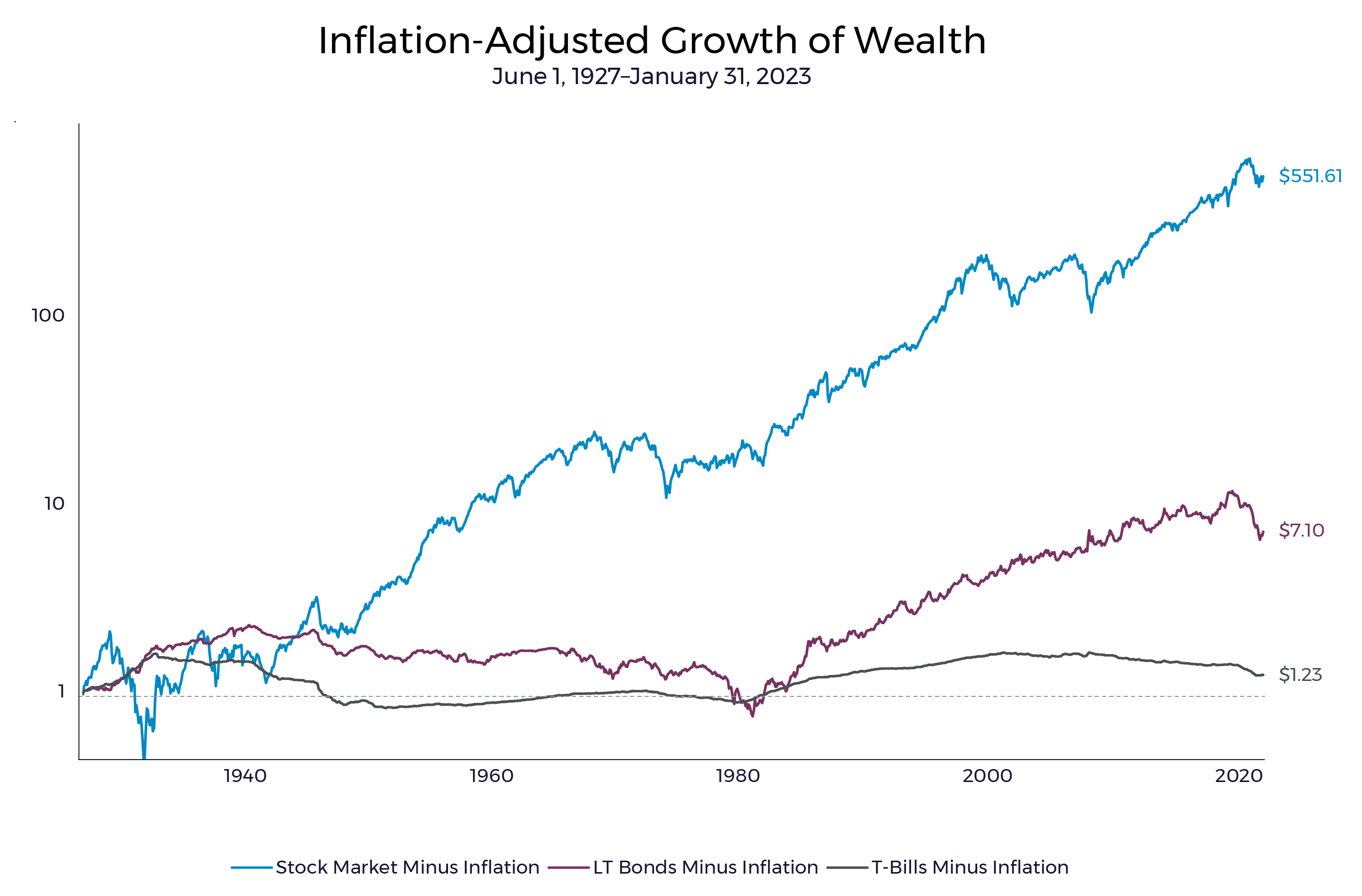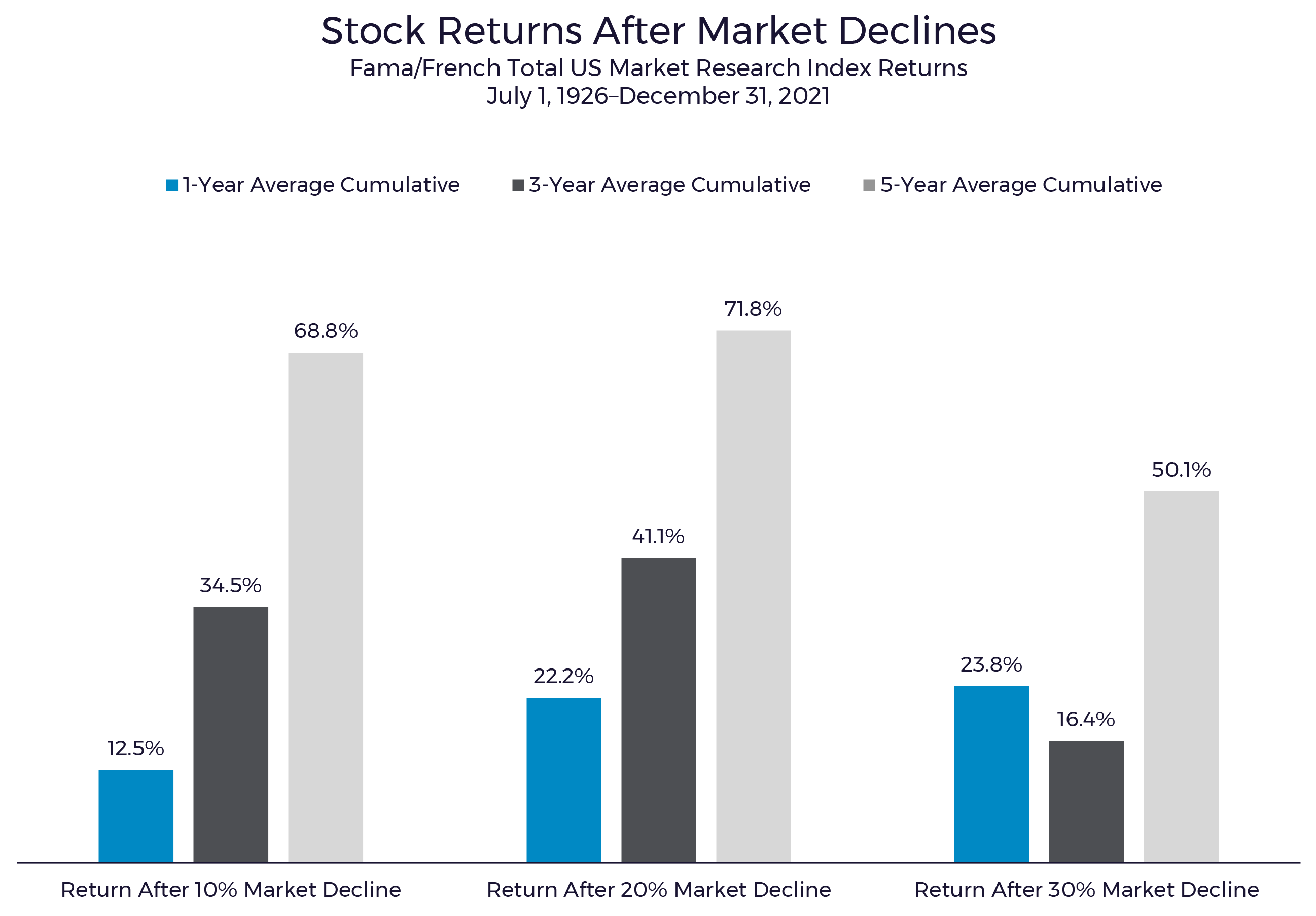Short-term interest rates have increased substantially over the past year, as the Federal Reserve has increased rates to combat elevated inflation in 2021 and 2022. This has drawn a lot of investor attention to certificates of deposit (CDs).
A recent Wall Street Journal article noted the significant increase in CD investing: “Balances in CDs rocketed from $36.5 billion in April 2022 to $418.4 billion in January.”1
Those are big numbers. A lot of that money likely came from bank accounts, where the money was earning no interest before, but some of it comes from investors who are opting to take the CD rates rather than invest in more risky assets like stocks and bonds.
It has been a decade since investors have had the opportunity to earn a reasonable interest rate on CDs and other short-term, low-risk investments. We want to address when to take advantage of doing so and when it is not the best solution.
To answer this, investors must first understand why it is important to invest.
Most People Invest to Increase Their Purchasing Power, CDs Do Not Typically Do So
Investing aims to maintain or increase purchasing power — the amount we can spend in the future using our saved dollars. For example, what it cost to buy a quart of milk 100 years ago could buy less than a cup of milk in 2021. To maintain purchasing power, dollars should be invested rather than just held in a bank account or put under the mattress.
While rates on one-year CDs have risen to over 4%, recent inflation has been higher than that, clocking in at 4.68% in 2021 and 7.99% in 2022.2 This means that even though CD investors are receiving a sizable return on paper, they would be losing purchasing power if inflation stays the same. On the other hand, stocks and bonds have both exceeded inflation, even during past periods of higher-than-average inflation.
The chart below illustrates this using U.S. Treasury bills, which have comparable return to CDs of similar term because both are guaranteed by the U.S. government either directly or through the Federal Deposit Insurance Corporation. Such short-term, risk-free investments have delivered less than 0.3% over inflation annualized since 1926 with multiple 20+ year periods when these risk-free investments have lost purchasing power after inflation.

Few investors have saved enough for their retirement or other goals such that they can pay for their long-term needs dollar for dollar if their investments do not grow faster than inflation. Investing in CDs makes achieving goals that require growth of purchasing power nearly impossible, or at least very improbable.
Investing to Hedge a Future Liability
It is common sense to invest short-term money in short-term investments and long-term money in long-term investments. The idea is both simple and mathematically supported by something called “liability matching.”
If you have a short-term liability, such as money you owe for taxes or spending needs coming up in the next few years, it makes sense to invest this cash in something like money markets or CDs. This ensures those funds will be available when you need them. However, it is important to be careful when doing so. We will discuss best practices for this later in this section.
Long-term liabilities, like retirement spending 20 years from now, require a more complicated answer. Likely, very little of it should be invested in risk-free assets like a CD because retirees need their wealth to grow to avoid outliving their assets. A retiree should invest in the blend of stocks and bonds that minimizes the chance of running out of money in later years.
Most investors need a return above inflation to meet their goals, and stocks have proven to do so reliably over long time periods and across periods of both low inflation and high inflation.
Sometimes, when interest rates go up, stocks experience short-term losses because their expected future returns need to increase to be competitive with other available investments like CDs and bonds.
This phenomenon also may explain why many of the largest returns in stocks happen shortly after some of the worst returns. Referencing a chart we have used many times in the past on this topic, you can see that the return after a 20% market decline is on average 22%, which is double the 10% long-term average return of stocks across the entire period.

In conclusion, we should consider foundational investment principles when choosing where to invest our cash. Looking at an interest rate in isolation is likely to lead to the wrong decision. Any investor considering investing in CDs to hedge short-term cash needs should absolutely consider doing so. But for the bulk of our funds, we should likely maintain a portfolio of stocks and bonds because of the ability to increase purchasing power long term, properly align our assets with our long-term liabilities and “stay in our seat” for when stocks may experience their strongest returns.
SOURCES
1 Oyin Adedoyin, “Savers Pile Money Into Bank CDs as Rates Top 5%.” Wall Street Journal, March 12, 2023.
2 U.S. Bureau of Labor Statistics, “Consumer Price Index for All Urban Consumers: All Items in U.S. City Average.” Retrieved From FRED, Federal Reserve Bank of St. Louis, Accessed April 10, 2023.





